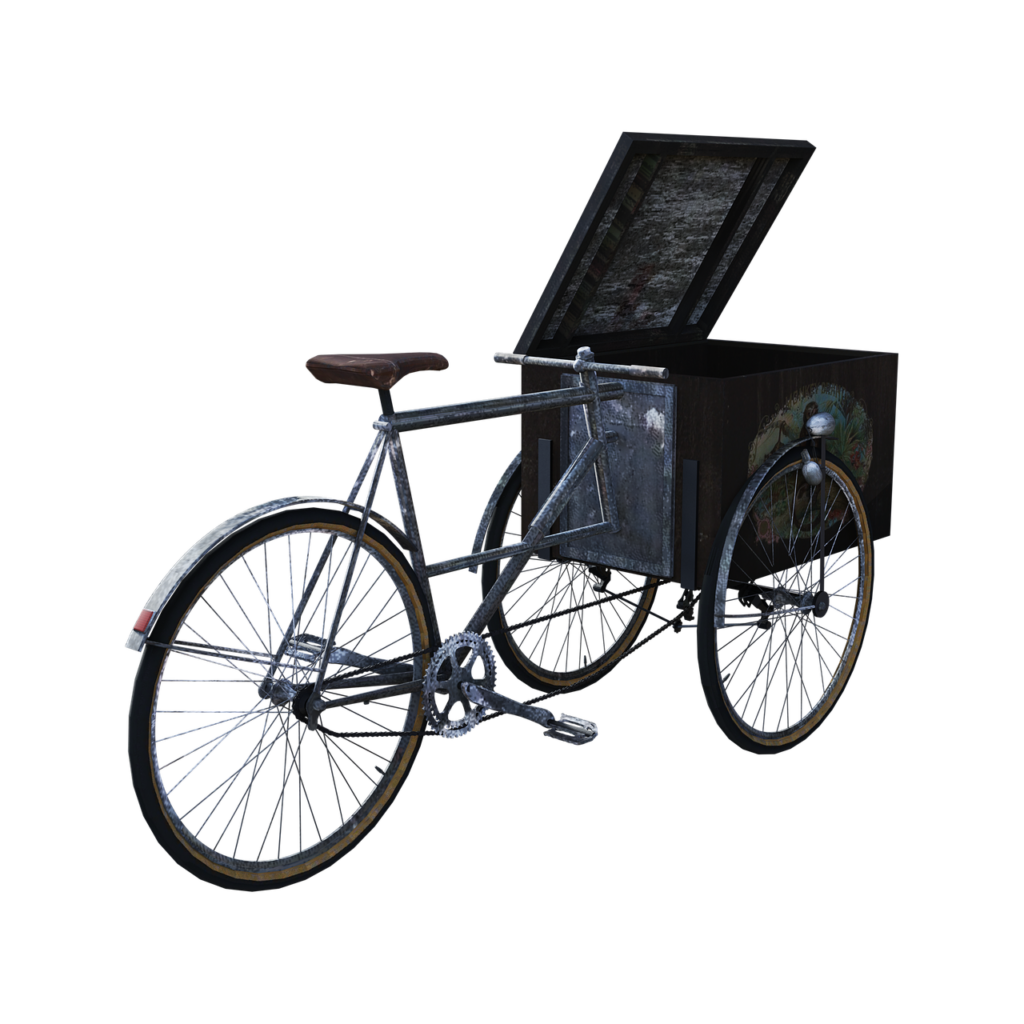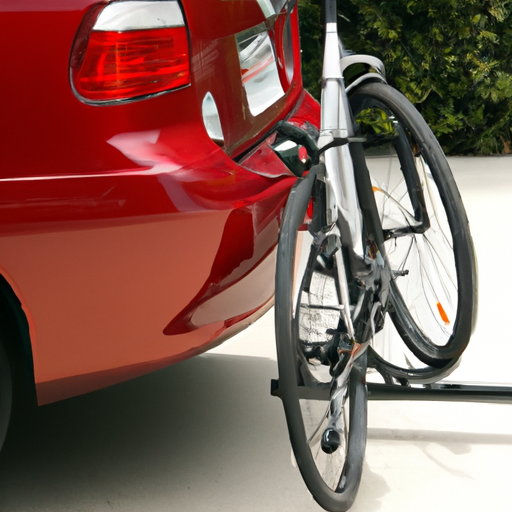What’s The Correct Way To Store My Bike For The Winter?
As the colder months approach, it’s important to know how to properly store your bike during the winter season. It’s not just about finding a place to stash it away; there are specific steps you should take to ensure your bike remains in good condition while hibernating. From cleaning and lubricating the components to choosing the right storage location, this article will guide you through the correct way to store your bike for the winter, so that when spring rolls around, you’ll be ready to hit the pavement with ease.

Choosing the Right Location for Storage
Indoor storage
When it comes to storing your bike during the winter, choosing the right location is key to keeping your bike in top condition. Indoor storage is often the preferred choice as it provides protection from the elements and minimizes the risk of damage. Ideally, you should store your bike in a dry and temperature-controlled environment such as a garage, basement, or dedicated bike storage room. This will help prevent moisture build-up, rust, and damage to sensitive components.
Outdoor storage
If indoor storage is not possible, outdoor storage can be an option. However, it’s important to take extra precautions to protect your bike from the elements. Consider investing in a high-quality outdoor bike cover to shield your bike from rain, snow, and UV exposure. Additionally, choose a well-ventilated and shaded area to minimize the risk of rust and sun damage. It’s also advisable to elevate your bike off the ground by using a bike stand or hooks to prevent moisture from accumulating.
Cleaning and Maintenance
Cleaning the frame
Before storing your bike for the winter, it’s essential to give it a thorough cleaning. Use a gentle bike-specific cleaner or mild soapy water to clean the frame, making sure to remove any dirt, mud, or debris. Pay special attention to hard-to-reach areas such as the bottom bracket, headset, and rear triangle. Use a soft brush or sponge to scrub away stubborn dirt, and rinse with clean water. Once cleaned, allow the frame to dry completely before moving on to the next steps.
Removing and cleaning the chain
The chain is one of the most critical components of your bike, so it’s essential to remove and clean it before storage. Use a chain cleaner tool or a rag soaked in degreaser to clean the chain, removing any built-up grease and grime. It’s also a good idea to inspect the chain for wear or damage and replace it if necessary. Once clean, apply a quality bike chain lubricant to keep the chain protected and prevent rust from forming.
Lubricating the moving parts
In addition to the chain, it’s crucial to lubricate other moving parts of your bike before storing it. Apply a small amount of lubricant to the derailleur pivots, jockey wheels, pedal threads, and any other moving parts. This will help maintain their functionality and prevent them from seizing up during storage. Be sure to wipe away any excess lubricant to avoid attracting dirt and grime.
Checking and inflating the tires
Properly inflated tires are essential for maintaining the integrity of your bike during storage. Before stowing your bike away, check the tire pressure and inflate them to the recommended level. This will help prevent flat spots and maintain optimal tire shape. It’s also essential to inspect the tires for any cuts, bulges, or excessive wear, as these may need to be addressed before storage.
Inspecting and adjusting brakes
To ensure your bike is ready to ride when spring arrives, take the time to inspect and adjust the brakes before storage. Check both the brake pads and the brake cables for any signs of wear or damage. If necessary, replace worn brake pads and adjust the cable tension to ensure smooth and efficient braking. Properly functioning brakes are crucial for your safety and the longevity of your bike.
Inspecting and lubricating cables
Cables play a vital role in shifting gears and operating the brakes, so it’s essential to inspect and lubricate them before storage. Check the cables for any signs of fraying or rust, and replace them if necessary. Apply a small amount of cable lubricant to ensure smooth and responsive shifting and braking. This will help prevent cable corrosion and binding, ensuring your bike is ready to go in the spring.
Protective Measures
Covering the bike
Whether storing your bike indoors or outdoors, using a bike cover is an excellent way to protect it from dust, moisture, and UV exposure. Choose a cover made from breathable material, as this will prevent condensation and mold buildup. Make sure the cover fits your bike properly, covering it entirely from top to bottom. A well-fitted cover will provide an extra layer of protection, keeping your bike clean and extending its lifespan.
Securing the bike
Protecting your bike from theft is just as important as safeguarding it from the elements. Use a high-quality bike lock to secure your bike to an immovable object, such as a sturdy bike rack or wall anchor. Consider using a U-lock or heavy-duty chain lock, as they offer more security compared to cable locks. Additionally, remove any easily removable components, such as lights or saddlebags, to deter potential thieves.
Disassembling and Storing Parts
Removing and storing the wheels
To save space and prevent any damage to the tires, it’s advisable to remove and store the wheels separately during bike storage. This also makes it easier to transport your bike if necessary. Use quick-release levers or wrenches to loosen the wheel axles and remove the wheels. Once removed, place the wheels in a secure and clean area, preferably hanging them or storing them upright to avoid pressure on the tires.
Disassembling and storing the pedals
Removing the pedals before storage can prevent them from becoming seized or damaged over time. Use a pedal wrench to unscrew the pedals from the crank arms. Remember, the left pedal is reverse-threaded, so turn it clockwise to loosen it. Once removed, clean the pedal threads and apply a thin layer of grease before storing them in a safe place. This will help prevent corrosion and ensure easy installation when spring arrives.
Removing and storing the saddle
Taking off the saddle is another useful step to protect it from damage. Use a wrench to loosen the saddle clamp bolt and remove the saddle from the seat post. Clean the seat post and apply a thin layer of carbon or fiber grip paste if necessary. Store the saddle separately in a safe and dry place to keep it in optimal condition.
Storing the handlebars
If you have limited storage space, it may be necessary to remove the handlebars for more compact storage. Start by removing the grips or bar tape and loosening the stem bolts. Rotate the handlebars to align them with the frame, making sure not to twist or bend the cables. Secure the handlebars in place using zip ties or tape, and store them in a clean and safe location.
Storing the bike upside down
Storing your bike upside down can be an effective way to save space and protect sensitive components. By flipping the bike, you reduce the risk of damage to the handlebars, derailleur, and saddle. Place a clean towel or bike mat under the handlebars to prevent any scratches or marks on the frame. Keep in mind that this storage method may not be suitable for all bicycle types, so consider the specific needs of your bike before choosing this option.

Special Considerations for E-Bikes
Charging and storing the battery
If you own an e-bike, there are additional steps to take to ensure the proper storage of the battery. Before storing, fully charge the battery to prevent it from deep discharging. Remove the battery from the bike and store it separately in a cool and dry place. To maintain battery health, it’s recommended to recharge it every few months during storage.
Protecting electronics and display
E-bikes often come equipped with electronic components and displays, which require special care during storage. Before storing your e-bike, it’s important to remove any accessories such as lights or bike computers. Store these components in a dry and safe location to prevent damage. If possible, cover the electronic components and display with a protective layer or use specialized protective covers to shield them from dust and moisture.
Preventing Damage and Theft
Avoiding moisture and extreme temperature exposure
Moisture and extreme temperatures can cause significant damage to your bike, so it’s essential to avoid prolonged exposure to these conditions. If storing your bike indoors, keep it away from areas prone to humidity, such as basements or laundry rooms. Likewise, avoid storing your bike in locations that experience extreme temperature fluctuations, such as attics or unheated garages. Moisture and temperature-controlled conditions will help preserve your bike’s integrity and prevent rust and component damage.
Using a quality lock
When it comes to preventing theft, investing in a high-quality bike lock is essential. Choose a lock that offers a high level of security, such as a U-lock or heavy-duty chain lock. Ensure the lock is securely fastened around both the frame and an immovable object, making it difficult for thieves to cut or remove it. It’s also advisable to lock your bike in a well-lit area or a location with security cameras to further deter potential theft.
Considering insurance coverage
Bike theft or damage can happen despite all the precautionary measures you’ve taken. To protect your investment, consider obtaining insurance coverage specifically designed for bikes. Some insurance policies offer coverage for theft, damage, and even liability. Research different insurance options and choose a plan that suits your needs and offers peace of mind in the unfortunate event of theft or damage.

Regular Check-ups during Storage
Checking on the bike periodically
While your bike is in storage, it’s essential to check on it periodically to ensure everything is in good condition. Inspect the frame for any signs of corrosion or damage and address any issues promptly. Check the tires for proper inflation and any signs of wear or cracking. Look for any pests or critters that may have made their way into your storage area, as they can cause damage to your bike.
Performing necessary maintenance
During your regular check-ups, perform any necessary maintenance tasks to keep your bike in top shape. Reapply lubricant to moving parts if needed, and check and adjust brake cables if they have become loose. Tighten any loose bolts or screws, and address any other issues that may have appeared during storage. By staying on top of maintenance, you’ll ensure that your bike is ready to hit the road when spring arrives.
Ensuring proper tire pressure
Tire pressure is crucial for optimal performance and safety. Check the tire pressure regularly during storage and inflate them to the recommended level if necessary. Improperly inflated tires can result in poor handling and increased rolling resistance. By maintaining proper tire pressure, you’ll ensure a smoother and more efficient ride once you’re ready to hit the road again.
Adjusting storage conditions if necessary
If you notice any issues with your bike’s storage conditions during your check-ups, take action to rectify them promptly. For example, if you find excessive moisture or mold in your storage area, consider relocating your bike to a drier environment to prevent further damage. Additionally, if you notice a significant temperature fluctuation, such as extreme heat or cold, you may need to adjust storage conditions or consider alternative storage options.
Preparing for Spring
Cleaning and tuning the bike
As the winter comes to an end and spring approaches, it’s time to prepare your bike for the upcoming riding season. Start by giving your bike a thorough cleaning, removing any dirt, grime, or residue that may have accumulated during storage. Use a bike-specific cleaner or mild soapy water and a soft brush or sponge. Pay attention to all the nooks and crannies, including the drivetrain, brakes, and frame. Rinse the bike with clean water and allow it to dry completely.
Reassembling and adjusting stored parts
If you disassembled any parts of your bike for storage, now is the time to reassemble them and ensure proper adjustment. Install the wheels, pedals, saddle, and handlebars, making sure to tighten all bolts and screws to the correct torque specifications. Check the alignment of the handlebars and make any necessary adjustments to ensure a comfortable riding position. It’s also a good idea to wiggle and test the components to ensure everything is securely in place.
Checking for wear and tear
Before hitting the road, thoroughly inspect your bike for any signs of wear and tear that may have occurred during storage. Look for any cracks or dents in the frame, fork, or wheels. Check the brake pads for any signs of wear and replace them if necessary. Examine the chain for any rust or excessive stretching and lubricate it if needed. By addressing any issues before riding, you’ll ensure a safe and enjoyable experience.
Inspecting and testing brakes
Brakes are a critical safety component, so it’s crucial to inspect and test them before your first ride of the season. Check the brake pads for any signs of wear or contamination, and replace them if needed. Inspect the brake cables for any fraying or damage, and ensure they are properly tensioned. Squeeze the brake levers to verify that the brakes engage smoothly and provide adequate stopping power. If you notice any issues, such as sponginess or uneven braking, have your brakes professionally serviced before riding.
Taking a test ride
Once you’ve completed all the necessary preparations, take your bike for a short test ride to ensure everything is in working order. Pay attention to how the bike feels and performs, making note of any unusual noises, vibrations, or handling issues. Test the shifting, braking, and overall stability of the bike. If you notice anything that needs attention, address it before embarking on longer rides.
Professional Bike Storage Options
Exploring bike storage facilities
If you don’t have access to suitable storage space or prefer a more convenient solution, you may consider utilizing professional bike storage facilities. These facilities offer secure, climate-controlled storage options, providing an added layer of protection for your bike. Research local bike storage facilities to find one that best meets your needs in terms of location, cost, and security features.
Benefits and drawbacks
Professional bike storage facilities offer several benefits over traditional storage methods. They provide a controlled environment, protecting your bike from extreme temperatures, moisture, and theft. Additionally, they offer convenience, allowing you to easily access your bike when needed. However, it’s important to consider the costs associated with these facilities, as they may be higher than other storage options. Assess your priorities and budget to determine if professional bike storage is the right choice for you.
Types of storage solutions
When exploring professional bike storage options, you’ll find various solutions to choose from. Some facilities offer individual lockers or cages for secure storage, while others provide larger communal spaces for multiple bikes. Consider the size and security features of each storage solution and determine which one best suits your specific needs. Some facilities may also offer additional amenities or services, such as bike maintenance or repair, which can further enhance the overall convenience of professional bike storage.
Conclusion
Storing your bike correctly during the winter months is crucial for preserving its condition and ensuring optimal performance in the long run. Whether you choose indoor or outdoor storage, taking the time to clean and maintain your bike, as well as implementing protective measures, will help prevent damage and extend its lifespan.
Properly disassembling and storing bike parts, especially for e-bikes, is essential to safeguard their integrity and functionality. Taking preventive measures against theft and considering insurance coverage will provide peace of mind during storage. Regular check-ups and preparations for spring, while also exploring professional bike storage options, offer additional convenience and protection for your bike.
By following these comprehensive guidelines, you can confidently store your bike for the winter, knowing that it will be in great condition and ready to hit the road when the warmer weather arrives.



